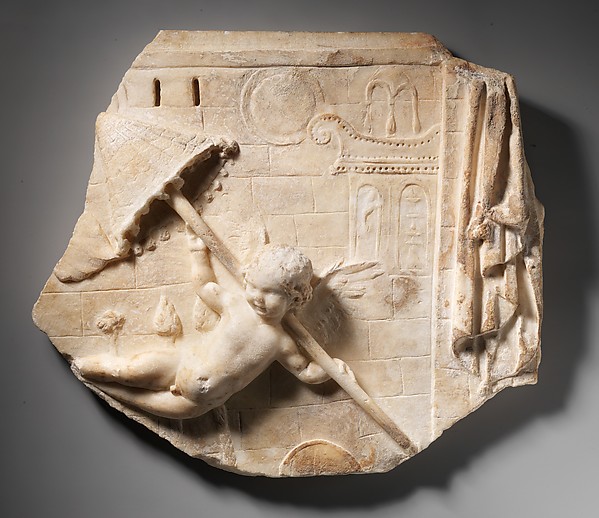This is a fragment of a decorative marble plaque from the 1st century AD, in Rome. It is 31.5cm high, and it kept at the Metropolitan museum of New York. It depicts a winged Eros carrying a parasol. Eros was the Greek god of love, or of passion and desire. He is depicted as a carefree and beautiful winged youth sometimes with a crown of flowers. In earlier Greek art he was depicted as a handsome grown man representing sexual power. He was depicted as younger and younger as time went on, and by the Hellenistic period he was depicted as an infant, as he is shown here, and also in the piece we were researching called ‘Pan, Aphrodite and Eros’. Eros is said to be the son of Aphrodite, the goddess of love and beauty, and/or as the assistant of Aphrodite; in the original marble statue we were researching, Eros is helping Aphrodite get away from the advances of Pan. Behind Eros in this fragment of marble is a scene of a house and a moon or sun, in varying scale showing depth. However, it is in the carving of the parasol that we get a real sense of the depth of the scene. The parasol pops out of the marble like it is really floating away with the very round and protruding Eros hanging on to it. Especially in the pole of the parasol, it just looks like its not even a part of the carving, but that its actually just flying away, it is really incredible. There is also very nice detailing and a 3D effect on the right hand side in what looks to be curtains. The details of line behind Eros look like bricks on a building.
